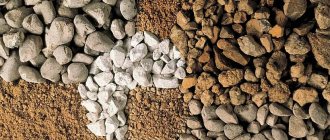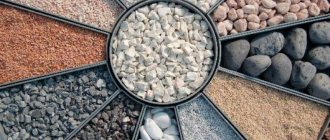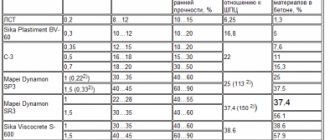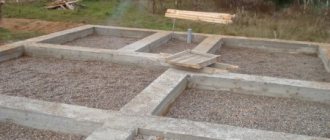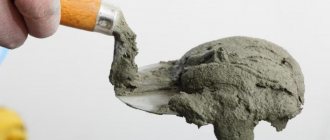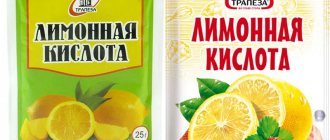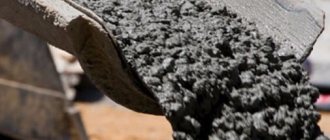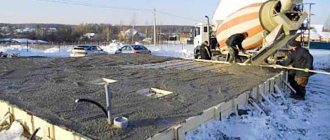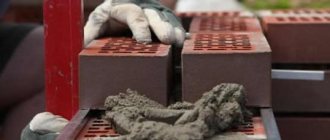Concrete solvent: types
Remove old grease stains from tiles and decks. To remove old grease stains from tiles and decks, you can dissolve a dishwashing detergent in warm water. Using a cotton cloth, apply the solution to the stains and let it sit for a few minutes. Then wash the house with clean water. . Soak a clean cotton towel with one of your household items and apply the stains.
Then use a paper towel to absorb the dissolved fat. Washing powder: To free the patio slabs of dried grease stains, you can alternatively touch a suspension of detergent and flour. Use a homemade stain remover and wait for the flour to dry. Then vacuum it with a vacuum cleaner.
- Substances that corrode the stone base of building materials are completely safe for humans and nature, because:
- they do not emit any toxic compounds into the atmosphere;
- these substances are absolutely fireproof, since they do not support combustion processes at all;
- the odor they produce does not irritate the mucous membranes, which is very convenient when working with large contaminated surfaces;
- When they get into the ground, such solvents decompose fairly quickly, but do not cause significant harm to the environment.
- With the help of such compositions, you can safely clean surfaces coated with varnish or paint, without fear that they will spoil the fragile top layer.
- Typically, solvents in production are distributed into canisters or bottles, which are equipped with sprayers for convenience. There are also ready-made formulations and concentrates that must first be diluted with water.
- Nevertheless, precautions in any case will not be superfluous. When cleaning concrete, it is recommended to work with solvent using gloves and to ventilate the room in which the work is carried out well.
- If solvent gets on your skin, simply wash it off with plenty of water and soap.
How to remove concrete: procedure
Home Remedies: Remove Grease Stains from Wood
Remove old grease stains from natural stone. If you want to remove old grease stains from granite or other natural stone, use a wash basin. A brake vacuum cleaner is also suitable for removing old grease stains from natural stone: spray the home remedy on the stains and leave it on for a few minutes.
- Soak a clean cotton cloth in the household and apply the stains.
- Let the gasoline work and then remove it with a paper towel.
- Then rinse off the cleaner with clean water.
The following table will tell you which home remedies are suitable for removing fresh and old grease stains from wood, concrete, tiles, granite, natural stone, parquet and decking.
When working with solvents for building mixtures of stone composition, you need to adhere to certain rules and stages of work. Let's take a closer look.
- Surfaces contaminated with concrete must first be cleaned of large parts of the composition, debris and dust using a mechanical method.
- The solvent must be applied using a special sprayer or large brush to a dry or damp surface, it all depends on the solvent.
- After a short period of time indicated on the packaging of the composition, it is necessary to remove the foam that appears with a water jet. If necessary, you can use a brush for working with metals.
- It may be necessary to reapply the solvent if the concrete was not completely removed the first time.
It is most effective to buy solvents in the form of a concentrate. This will allow you to prepare the right amount of mixture in the most suitable proportion, which will depend on the degree of contamination of the surfaces. Let's consider the features of removal with concentrate.
The best home remedies are alcohol, baking soda, pebble soap, and soda. Unfortunately, grease stains cannot always be completely eliminated. However, don't throw your rifle into the grain after your first try. Apply the home remedy a second time, increase the concentration or increase the exposure time. Sometimes stains disappear on their own because they are distributed throughout the material.
Cleaning windows or preventing contamination is a task that is already important during the construction phase of a facility. Also later: If you want to clean windows, you don't need to learn this, but you should pay attention to some important things to keep your windows truly clean and undamaged.
- Old traces must be removed using undiluted solution.
- To remove fresh cement mortar, you will need a concentrate diluted in a ratio of 1:3.
- It is recommended to remove limescale from objects using a mixture in a ratio of 1:5.
- The equipment can be easily cleaned with a solvent with a concentration of 1:10. In this case, it is best to add additional cleaning chemicals in small quantities.
- Some types of surfaces may change their shade after cleaning concrete, so before use you must test the product on a small area of the material.
Step-by-step plan: where to start cleaning the bathroom after renovation
Before repair work, it is advisable to pack all plumbing fixtures under film to preserve their integrity and beauty. Unfortunately, in the rush of passion for repairs, many people forget about the basic rules.
1. Remove residual debris from the bathroom area.
2. Wash the tiles from dried residues of glue and sealants.
3. Sweep the “remnants of luxury” from the floor with a damp broom.
4. Wipe clean all surfaces. You will need to wash everything several times, since the first time you will not be able to wash off the construction dust without streaks.
5. Try to wash the floor from dirt and dust. It is better to use a soap solution to remove streaks and whitish spots. How to prepare a soap solution: add a little liquid soap or any detergent to a bucket of warm water. Lather and wipe the surface generously several times. You can add a couple of drops of vegetable oil to the bucket with the solution to more effectively wash the floor and wash it clean. If there are tiles on the floor, you need to carefully clean up after repairs so as not to slip and injure yourself.
To clean bathroom tiles on the walls, it is advisable to vacuum the surface in advance. A competent craftsman usually, when laying tiles during the repair process, immediately removes the remains of glue and other building materials. Then cleaning the walls is much easier.
The glue is removed with water and vinegar. Soft joint grout - with plain water, grout based on epoxy resin - with a special solvent for epoxy resin. The laundering process is long but effective. After washing, the bathroom becomes a standard of beauty. If there are traces of paint left on the tiles in the bathroom, they can be removed with a solvent. This method is suitable for smooth tiles.
The area with the paint is rubbed with the solution, then a film is applied to soften it. Afterwards it is removed using a construction spatula. After washing, the tiles look shiny and streak-free. Taps, mixers, shower hose are washed with copious amounts of water. This will help wash away the top layer of dirt. Then thoroughly rub the surface with a soft sponge and soap solution, rinse with water and rub with a cloth until it shines. You can use household chemicals for plumbing fixtures. Lampshades and lamps are washed with a simple glass and mirror cleaner.
Selecting a product for removing concrete and cement
Clean windows – the “how” is important!
- Find the best deals on the best deals!
- Guaranteed easy, no strings attached and no obligation!
Glass can withstand a lot, but there is a risk that building materials can attack it. For example, according to the "Glass Cleaning Leaflet" from various fiberglass and fiberglass companies, the window must be cleaned during the construction phase if concrete and cement solutions are sprayed onto the glass. If one were to neglect to clean the window, sediment or similar substances could cause the glass to corrode due to its alkaline properties. Therefore, they should be emptied as soon as possible with plenty of water. Even better: at the same time, provide protective measures, for example with protective gas films, which reduce the risk of contamination.
- You can use different products to clean cement from surfaces. Each of them has its own composition and characteristics. The required amount of solution for application and the period during which the composition should act depends on the set of components. Some of them can be applied to dry dirt, while others can only be applied to a wet surface.
- The concrete remover must be selected according to the type of contaminated surface. More attention should be paid to those options that have the following characteristics:
- quick cleaning of contaminated surfaces from cement;
- incompatibility with rubber materials, which means limitations in use;
- the presence of protective components against metal corrosion;
- ensuring the prevention of concrete plaque formation.
- Such compositions and products should be stored in a room where there is absolutely no moisture and always in a tightly closed bottle. If possible, it is necessary to prevent direct sunlight from entering the container and protect the solvent from freezing.
Removing paint from concrete: instructions
Often, professional builders and private homeowners are faced with the problem of removing paint from a concrete surface. This is not difficult to do; let’s look at the step-by-step technology.
Even if the house is subsequently occupied, there are rules for cleaning the window. Not all means are suitable. Additionally, "commercially available glass cleaners" or "generally neutral detergents" may be used. In case of more severe contamination, such as from grease, alcohol can also be used. Possible tools for cleaning near the window are rubber wipes, fabrics, leather, clean sponges. In general, the leaflet recommends plenty of water for cleaning glass. . Sometimes special glass also requires extra care during cleaning.
Small scratches that are cleaned by a window often have a detrimental effect here than on other windows. This applies, for example, to windows with self-cleaning glass, which clean the window less frequently without making it unnecessary. It is also important here to carefully remove tools such as rubber wipes from materials such as lubricants and silicone before use.
Tools:
- putty knife;
- wash;
- respirator;
- hot water;
- technical hair dryer;
- wide brush.
Sequence of work:
- Determine what paint is applied to the surface. If the item is coated with a water-based paint, then you will have to work with a spatula. Oil paint must be removed from concrete using a special remover.
- Calculate the required amount of wash and place the container with it in hot water, open, where you leave it for a while.
- Wear a respirator.
- Using a wide brush, apply the remover to the concrete surface.
- Go over it with a spatula, cleaning the stone composition.
Old oil paint can also be removed using a hair dryer. After using it, the concrete must be cleaned with a thick brush.
Clean windows - frame and gaskets
What also needs to be cleaned for window glass is also true for window profiles and gaskets. Look for suitable cleaning products. For example, window frames in Frankfurt for aluminum windows recommend cleaning the profile at least once a year with a soft sponge, cloth and neutral detergent. Care should be taken when using seals. Incorrect cleaning products can embrittle the material and impair its functionality.
Clean various concrete surfaces
Whether it's a kitchen slab of concrete or freshly frozen concrete pavers, nothing is more annoying than stains on concrete. In the following guide, we describe how you can also remove stubborn stains from concrete. First, you must be clear about what you want to cleanse.
Concrete remover
- Often, chemical liquid compounds are used to remove stone mortar. Working with them is much easier than using a hammer. For this, different types of solutions are used:
- special solvents;
- sulfuric acid solutions;
- hydrochloric acid solutions;
- a mixture of detergent and glycerin.
- Each option can be used to remove concrete from different surfaces. Solvents and acid solutions are most often used to clean hard objects, and detergent with glycerin is used to remove concrete from fabric and carpet surfaces.
- If liquids are prepared at home, it is important to maintain the correct proportions. Otherwise, you may damage the material underneath the concrete or may not be able to dissolve the cement at all.
Removing concrete from brick: instructions
- Brick can be cleaned from stone building material using mechanical and chemical methods. You need to choose a specific method in accordance with the type of surface, the number of bricks and the degree of contamination.
- If the base is strong enough and it is not so easy to damage it, then you can use a hammer and chisel. In another situation, chemical compounds can be used. It is important to remember that the second method cannot be used to clean white sand-lime brick, since it will begin to deteriorate under the influence of chemical elements. If it is necessary to remove concrete from such a surface, you can use the old method - rubbing another brick.
- To clean the red type of cladding from cement, we will need the following tools:
- trowel or spatula;
- regular and construction hammer;
- chisel;
- sandpaper;
- glasses and gloves for safe work.
- Before removing cement from the surface of artificial stone, the surface must be well wetted with water so that the bricks begin to absorb water. Then the solution will become a little softer, so it will be much easier to remove.
- Flat cement surfaces can be cleaned with a spatula or trowel. Large and voluminous areas cannot be dealt with without a chisel and hammer. You can also use a chisel - its unevenly sharpened sides can become more convenient for such work.
- Concrete can be removed from the surface of individual stones with a construction hammer. When delivering each blow, it is important to keep the tools parallel to the base of the brick, thereby reducing the risk of damage to the metal.
- After removing large pieces of cement, the brick is treated with sandpaper. To make it easier and faster to deal with a contaminated surface, it can be mounted on slats.
- Sand-lime bricks are cleaned using the following tools:
- hammer drill or drill;
- sandpaper.
- Working with such equipment must be careful so that there are no deep cuts or damage on the surfaces. Such tools are more suitable for removing bulk cement residues. For small layers of concrete, you can use a grinding machine. After treating the surface, you need to carry out finishing work with sandpaper.
- Ceramic bricks can be cleaned with chemical solutions. Before applying them, be sure to read the instructions and strictly follow them while working. Each solution is applied differently depending on the composition and nature of the contamination. The concentration and exposure period also vary, which determines the sequence of work.
- In order not to buy ready-made substances, you can make your own solution of hydrochloric or sulfuric acid. They are diluted with water in a ratio of 1:10. These products are applied to a damp surface and are not washed off for about 15 minutes or 30 minutes if the concrete layers are large enough. This product can be removed with water or the tools described above.
- Sometimes, after using chemicals, white marks appear on the surfaces of bricks in the form of smudges. They can be eliminated using special facade cleaning products.
- After cleaning the brick surface from concrete, it must be treated with a water repellent. This concrete impregnation is characterized by water-repellent properties, which are needed to protect against moisture.
How to wash cement from various surfaces?
There are several methods for removing cement residues depending on the type of surface.
How to clean a concrete mixer
The concrete mixer also needs to be washed from cement residues. Typically, the device is cleaned in two ways: chemical and mechanical.
The caustic method is mainly used in factories and factories. Hazardous substances are used in production conditions. At home, you can try cleaning a concrete mixer with hydrochloric acid. Be extremely careful during the procedure as the substance causes burns.
Pour the acid into the container and make a few turns. Wait 20 minutes and then pour the soda solution into the drum. Give it a few more turns and drain off any remaining residue. This method is used if mechanical cleaning does not help.
The method of removing cement residues using tools or improvised means is less dangerous, but also requires extreme attention and caution. To clean the drum:
- First, remove large cement residues with a trowel or spatula.
- Then pour 2 buckets of water into the drum.
- Add 1 bucket of crushed stone to the container.
- Turn on the device for 5–10 minutes.
- At the last stage, remove the crushed stone along with the remaining cement.
How to wash clothes from cement
If, during construction work, clothes were stained with cement mortar, they can still be saved.
To avoid scrubbing dried pieces of cement off the item later, try to immediately soak the item in water so that the mixture does not set. However, do not rush to wash the item with powder or detergent; the solution may stick even more. It is best to fill the damaged area with any vegetable oil.
Concrete solvent: clean the surface with your own hands
It is not difficult to clean up the remains of stone building material yourself. There are several methods you can use to do this.
Clean stains from exposed concrete
Concrete floor covering Concrete floor Concrete floor Separate floor.
. The most sensitive are, of course, concrete elements made of exposed concrete. Here, again, there are countertops, sinks or countertops made of concrete, which quickly and visibly become dirty. First, you should try to remove the stains with clean water. Concrete furniture manufacturers also recommend using nuclear soap for stubborn stains. If you can remove stains, you have to accept it or grow up. This not only gives the concrete surface a special glow, but also protects it permanently. The use of acidic cleaners should be avoided.
- You can use a mechanical or chemical method. The chemical method is universal because it is suitable for cleaning most types of surfaces. The most important thing when working with substances is to consolidate the result obtained with the help of a water repellent.
- Typically, concentrated solutions of sulfuric or hydrochloric acid are prepared at home. The ratio of the active ingredient to water should be 1:10.
- Most often they use another method, which can be used even on fabrics and carpets. To do this you will need the following tools:
- sponge;
- acetone;
- water;
- glycerol;
- dull knife;
- plastic film;
- table vinegar;
- Toothbrush;
- solvent;
- paper towels;
- dishwashing detergent (liquid);
- isopropyl alcohol.
- Dried solutions are removed from carpets using a sponge soaked in a solvent. You can also use acetone, alcohol, or glycerin mixed with detergent instead.
- In the first and second cases, a moistened sponge is applied to the stain and covered with film. This is done to prevent evaporation of the composition. The sponge should be left on the concrete for about 1 hour, and after that the cement can be easily cleaned off with a wet cloth.
- In the third situation, glycerin must be mixed with detergent in a quarter to quarter ratio. This composition must be diluted with 2 glasses of water. It is recommended to mix the components in a bottle for more convenient subsequent application. It will be convenient to rub in this composition using an old toothbrush.
Concrete solvent Barracuda
- Today, the building materials market offers a large selection of different concrete solvents. One of the most popular manufacturers of such products is Barracuda.
- The composition of the mortar removers from this company is completely safe for use and does not contain harmful acids. It does not cause irritation to the skin and mucous membranes of the respiratory system. With its help, it is impossible to spoil varnished and painted surfaces, which is very convenient. In addition, this product does not contribute to corrosion, is completely biodegradable and is suitable for reusable use.
- In addition to cement, it can be used to remove water stone, tile adhesive, limescale deposits and efflorescence.
- The average consumption of the substance within one application is approximately 10 m2. m/l. This product is completely synthetic and cannot be stored open for more than 12 months. It is produced in cans and barrels of 1, 10 and 200 liters, respectively.
During construction work, some compounds may fall on clean surfaces and spoil the result. Prompt processing of materials allows you to easily correct the misunderstanding and return the surface to its magnificent appearance. When working with cement, you need to ensure that the procedures are carried out carefully, otherwise the frozen drops of the solution will be very difficult to remove.
Remove oil stains on concrete floors
Of course, you can also use such cleaners to remove oil stains.
Oil stains from a car are common on garage floors. To effectively protect your concrete floor after cleaning, you can use. For this purpose, a specialized retailer offers special concrete floor paints. Make sure the concrete color with plasticizers in car tires is compatible with the garage floor. There is also a home remedy that can be used to remove oil stains on concrete floors. Oil cleaning powders are probably what the fewest people will have at home. However, you can also remove oil stains perfectly with cat droppings. To make the bedding absorb oil even better, you can grind it on the oil slick and spread it further. Leave the cat litter in place for two weeks. Of course, you can also remove oil stains on other floors.
Special compounds sold in hardware stores allow you to remove mineral deposits and drops of cement from any surface. As a rule, such solutions are based on phosphoric acid. When answering the question of how to clean cement, it is also important to take into account its physical condition. The soft material can be scraped off with a special spatula, and the residue can be removed with mortar; hardened cement requires much longer work.
Water, gravel and cement: When mixed in the right proportions, these materials harden to form concrete. The amount of water should be approximately half the volume of cement. Example. If you want to use 12.5 kg of cement, you need 50 kg of gravel and about 6 liters of water. The amount of concrete needed depends mainly on the size of the project. For larger projects, it may be a good idea to consult with a structural engineer who can help you determine the correct quantity and quality of a particular concrete.
It is wise to combine the tools before work and place them close to the construction site so that you can handle them. Also pay attention to the correct work clothes: when working with concrete, you are well protected with gloves and long sleeves, because concrete can irritate the skin. To protect your eyes from splashes, wear safety glasses. If you are using a concrete mixer, take extra precautions: always be careful with the device, do not grab it or ensure stability.
Approaches to Removing Contaminants
Many people resort to using a hammer and iron nails to destroy the hardened parts of the cement, they want to tear it off the surface. This option is only suitable if the risk of damage to the material is not important. In other cases, it is better to use an acidic cement cleaner, the correct use of which will help keep the surface in good condition.
Step 2 - Mix a small amount of concrete
Using a shovel, 4 parts gravel and part cement in a bucket or wheelbarrow.
The latter facilitates subsequent transportation of concrete. Mix the mixture thoroughly with a shovel or masonry. Carefully add water - the concrete should not become too liquid. The amount of water corresponds to approximately half the volume of cement. Thus, half a bag of cement, almost 6 liters of water. Gravel, water and cement are thoroughly mixed with the masonry. A membrane stirrer facilitates this frequently required operation. After about 4 minutes the concrete is ready. It should not be too hard or too liquid. For use in the garden and in the house, the optimal sequence is similar to the sequence.
In order to clean the tiles, experts recommend placing them in water, completely covering the cement particles. After the material becomes soft, it needs to be scraped off with a chisel, and it is very important to hold the tile horizontally, fixing it on a flat surface.
A high-quality cement cleaner can be used instead of water; its active substances accelerate the softening reaction, as a result of which the contamination can be removed within 20-30 minutes. You can clean off dirt with a grinder only when you set the minimum speed of the tool; first, the material on which there is solution residue should be well fixed.
Step 3 - Mix the concrete with a concrete mixer
Many small jobs, such as installing a post, often require a small amount of concrete.
Ready-made mixes are available here to save time and effort. The mixer should be placed so that all necessary materials, as well as water, are always within reach. First, pour two-thirds of the water into the connected concrete mixer. For a good dosage, a bucket is recommended. Place all the gravel in the concrete mixer. Gradually pour the remaining water into the concrete mixer. Afterwards, let the machine run for a few minutes until the ingredients are sufficiently mixed.
Bathtub washing
As a result, the bath was left “for a snack.” What needs to be done so that after repairs the font becomes not only beautiful, but also clean? How to achieve cleanliness and order? When choosing special chemicals, you must pay attention to what type of bath the product is intended for: acrylic, cast iron, enamel.
Remains of glue and paint can be washed off the surface of the bath using a blade or knife. Carry out the procedure very carefully so as not to damage the integrity of the product. Tile adhesive can be removed using a hard sponge and water. It is necessary to fill the bath with water and leave it for a day. The adhesive is much easier to remove when it softens. Then simply rinse the font with clean water. The paint from the bath is removed with a solvent, which is applied to a cotton sponge and left for a couple of minutes.
Washing a plumbing device is quite scrupulous; the main thing is not to damage the surface. We suggest taking the advice of professionals and easily cleaning your bathtub after renovation. You can remove paint residue from an acrylic bath using a polishing machine. It is recommended to use this method only if you have experience in handling equipment. Otherwise, you will be able to wash off the paint along with part of the font.
